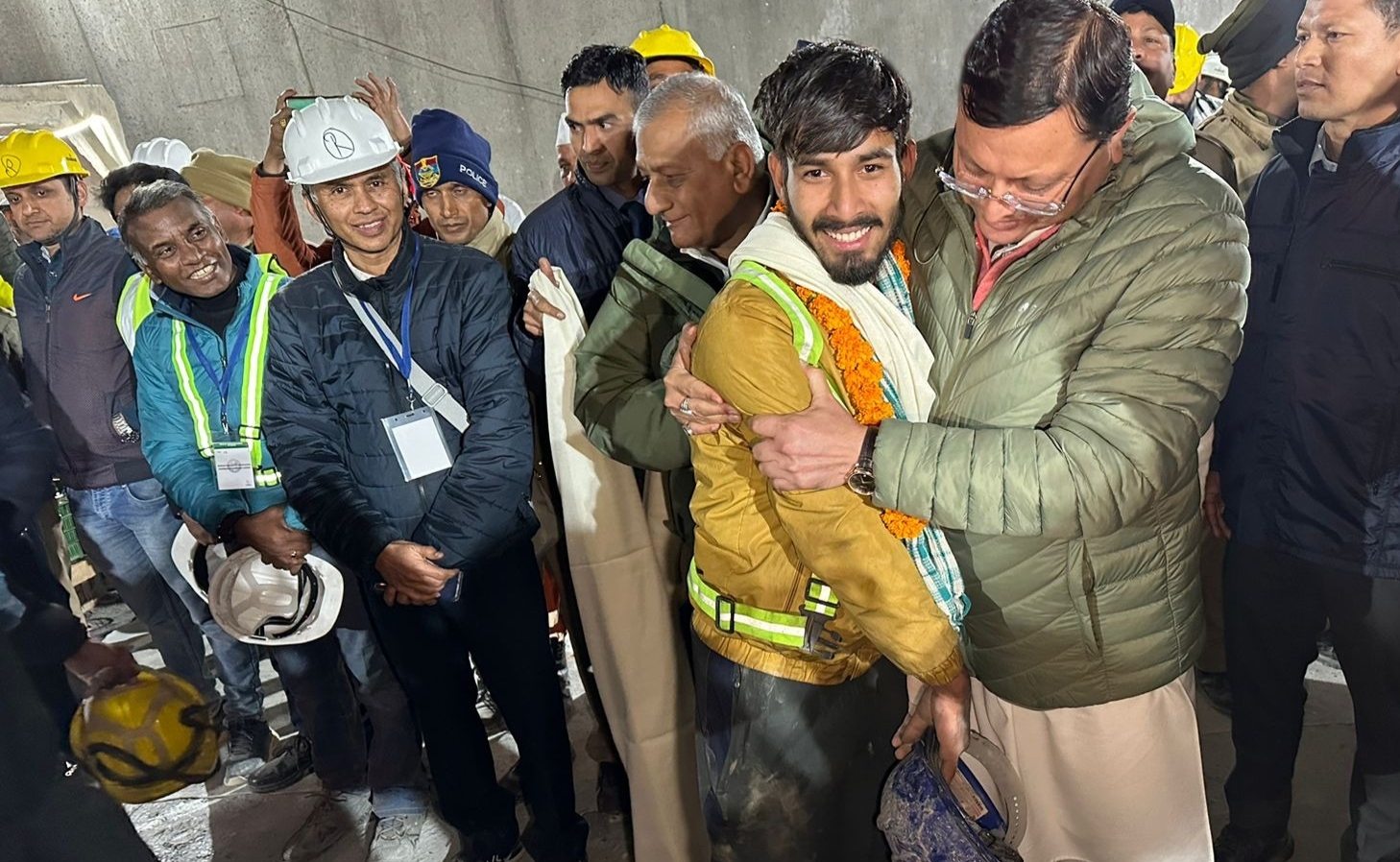Uttarakhand: Rescued workers flown to AIIMS Rishikesh in Chinook helicopter
The workers have been shifted to AIIMS Rishikesh for further medical check-up.
All the 41 trapped workers have been pulled out safely and are being attended by a team of doctors at a make-shift medical facility.

All the 41 construction workers who were trapped inside the collapsed Silkyara tunnel in Uttrakhand’s Uttarkashi for the last 17 days have been successfully brought out on Tuesday.
Rescuers, including tunneling experts from India and abroad, NDRF, SDRF and dozens more were involved in the marathon operation that went on for 17 days.
However, their safe extraction could become possible due to the efforts of at least “rate minors”, who drilled the remaining 12-13 meters of escape passage after the auger machine broke into the pieces.
Advertisement
Munna Qureshi, a rat miner from Delhi, was the first one to reach to the other side where workers were trapped since November 12.
Speaking to media after the operation, Qureshi said that he will never forget the respect they (trapped workers) have given to the rat hole miners.
“I removed the last rock. I could see them. Then I went to the other side. They hugged us, lifted us. And thanked us for taking us out. We worked continuously in the last 24 hours. I can’t express my happiness. I have done it for my country,” he said.
“The respect they (trapped workers) have given us, I can’t forget my whole life,” he added.
Rat hole mining is illegal in India. The practice was banned by NGT in 2014 for being “unscientific” and “unsafe” for labourers.
Rat hole mining, a controversial and outlawed mining practice, involves drilling of holes to extract small quantities of coal.
It is considered a primitive method that involves digging small holes ranging from five to 100 square metres to reach the coal seams.
Under the technique, rat miners dig a narrow tunnel which allows one individual to go inside and extract the coal. Since the tunnels fit just one person, the are called rat holes and those who does this are called “rat miners”.
Despite the ban, the coal mining practice still remains rampant in several parts of Meghalaya.
Advertisement